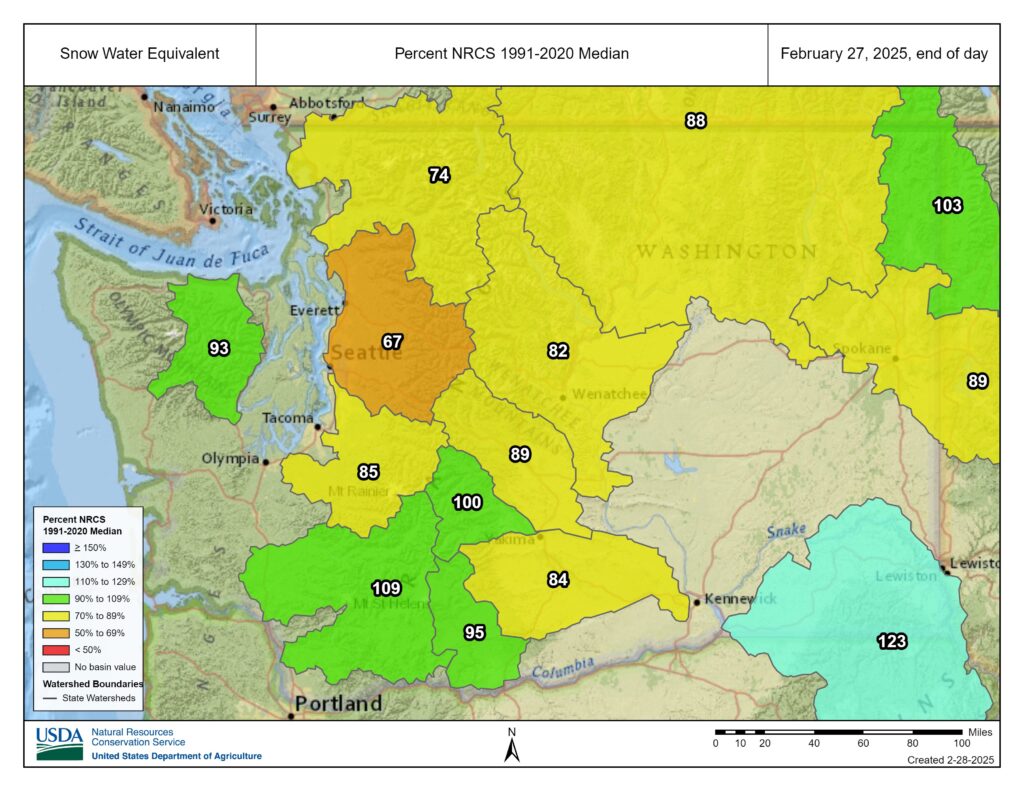Author: James Kraft, Executive Director
Seattle winter has felt different this year. As much as I enjoy sunshine and crisp air, I cherish our rainy season and know its importance—rain in the city often means snow in the mountains. Snow in the mountains means water for our rivers, streams, and salmon in the summer.
While these sunny winter days have been nice, they have brought uncertainty for our summer water supply. The Washington State Climate Office provided a water supply update on Feb. 13 that showed our average winter temperatures are above normal, and precipitation levels are below normal, especially in western Washington. January brought only 35% of our normal precipitation and was our fifth driest January on record!
Snow water equivalent in Washington basins compared to previous averages as of Feb. 27, 2025. Source: USDA Natural Resources Conservation Service
As a result, this year’s snowpack is below average across much of the Cascades. Other areas like the Blue Mountains and Lower Columbia are faring better with an above-average snowpack. Ultimately, our spring weather will decide the rest of our water year.
A cooler wetter spring can help our water supplies, rivers, and streams flow through the summer. As we saw in 2023, however, a sudden heatwave can quickly melt our snowpack and bake the state into drought.
The Washington State Department of Ecology made emergency drought declarations in 2023 and 2024 to summon resources for communities and the environment. Last year’s drought declaration remains in place until our water supply recovers. This Washington water supply update shows we must stay prepared.
The Teanaway River shows low flows on Aug. 10, 2023. WWT set up special, short term leases with farmers to keep water instream at a critical time for fish during a drought emergency in the Yakima basin.
No matter the near-term conditions, we know that droughts are becoming more frequent and that water overuse causes dangerously low flows in many local rivers and streams. The continued support of our partners and donors is more important than ever. They empower us to restore flows and craft long-term solutions to water overuse, scarcity, and drought.
We can create an abundantly flowing future for Washington together. I will keep my hope high and umbrella handy.


